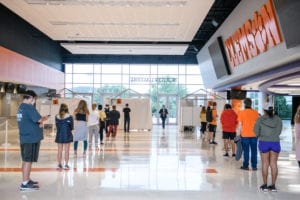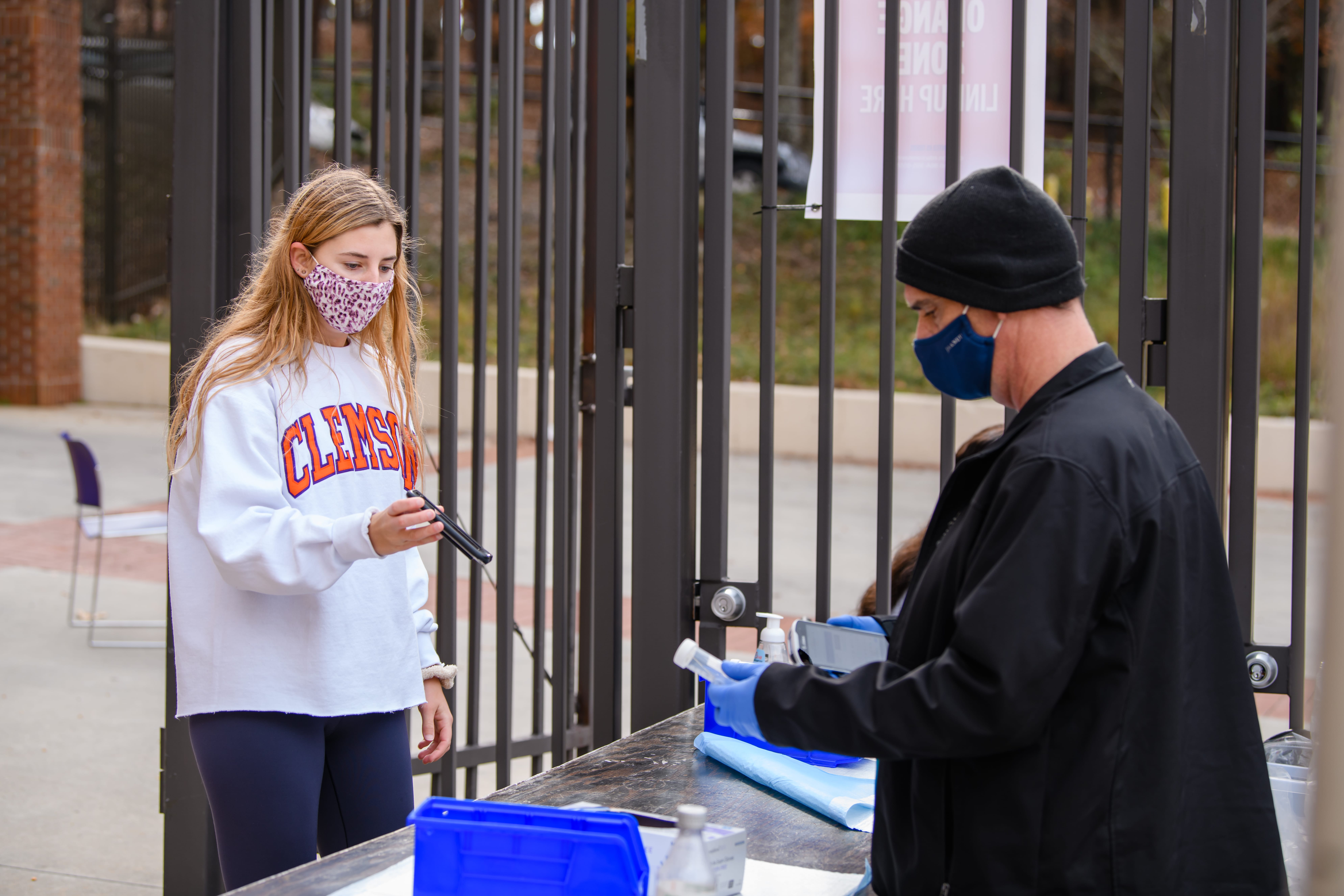First study documenting public university testing outlines strategy preventing 154% increase in cases
While COVID-19 cases may be on the decline, the virus is still prevalent nationwide, and higher education institutions need to prepare for a successful 2021 academic year. New research from Clemson University in The Lancet Child & Adolescent Health, one of the world’s premier peer-reviewed general medical journals, indicates how surveillance-based informative testing (SBIT) mitigates the spread of COVID-19 on campus, paving the way for other institutions, even those without the infrastructure or funding for mass-scale testing.
SBIT was implemented during the first two weeks of the Fall semester at Clemson. According to the study, random surveillance testing to identify outbreaks in residence halls and with targeted follow-up testing was twice as likely to detect a positive case than random testing models. In the absence of SBIT, transmission models developed by the research team show COVID cases would have increased by 154 percent.
“By focusing on residential hotspots, our SBIT strategy identified and contained outbreaks throughout campus. This strategy made efficient use of our resources, detecting positive cases at twice the rate of simple random testing.”
LIOR RENNERT | ASSISTANT PROFESSOR
COLLEGE OF BEHAVIORAL, SOCIAL AND HEALTH SCIENCES
SBIT led to a
36%
decrease in prevalence over a two-week implementation period. Without SBIT, estimated prevalence would have jumped by 60%.
The study is the first to document the implementation, results and relative effectiveness in detecting and containing COVID-19 outbreaks and mitigating university campuses’ spread. For most universities, voluntary testing was implemented, leaving many cases undetected and contributing to an increase of COVID on campuses and in their surrounding communities.
The surveillance-based informative testing was spearheaded by Clemson’s public health team of Lior Rennert, Christopher McMahan and Corey Kalbaugh. Additional co-authors on the manuscript are Delphine Dean, Lesslie Pekarek, Christopher Colenda, and graduate students Yuan Yang and Brandon Lumsden. They are the first Clemson team to publish in a Lancet family journal.
Clemson’s commitment to COVID-19 safety
The study’s research team played an integral role in the University’s ability to bring students back to campus in Fall 2020. Towards the tail end of the semester, there was a precipitous decline in student cases, despite significant increases in the case counts in surrounding communities. The declines were due in large part to the public health strategies implemented. At the pinnacle of these strategies was an aggressive plan to test as many students and employees as often as possible. By identifying active cases, the University was able to mitigate the virus’s community spread, thus reducing risk to students, faculty, and the larger community.

What Clemson faced was not unique – and it was not the only campus with a high number of reported cases. The difference? Clemson implemented a robust and repetitive testing strategy for students and faculty regardless of symptoms or exposure. In doing so, positive cases were identified and removed from the population, thus limiting the virus’s spread both on-campus and in surrounding communities through isolation and quarantine procedures.
Clemson’s public health strategies were derived through data-driven means. Over the summer, the University’s public health team designed and built models demonstrating pre-semester testing would reduce the spread and minimize peak cases during the semester. Acting on these findings, the University mandated all students and faculty be tested before returning to face-to-face instruction. As a part of these efforts, nearly 3,000 COVID-19 cases were discovered, preventing the return of nearly 3,000 infected students and faculty, who would have unknowingly spread the virus to others – infectivity is thought to be two to four people per confirmed case.
As in-person instruction began, the University also began randomly testing 5 percent of the student body weekly. These surveillance efforts allowed for the identification of “hotspots” in both the on- and off-campus student body. Testing was then redirected to these hotspots. This combination of testing drove the COVID prevalence to below 1 percent.
Since the initial testing efforts, Clemson’s positive rate dropped weekly – as did the population using isolation and quarantine accommodations. While most of the credit should rightfully lie with students’ responsible behavior, the University’s public health strategies undoubtedly contributed to the decreasing case count. Beginning October 2020, the public health team implemented a weekly testing regime, keeping disease prevalence down ever since.
Lior Rennert, Ph.D.
Assistant professor of biostatistics
Department of Public Health Sciences
College of Behavioral, Social and Health Sciences
Christopher McMahan, Ph.D.
Associate professor
School of Mathematical and Statistical Sciences
College of Science
Corey Kalbaugh, Ph.D.
Assistant professor
Department of Health Sciences
College of Behavioral, Social and Health Sciences
Yuan Yang, Ph.D. student
School of Mathematical and Statistical Sciences
College of Science
Brandon Lumsden, Ph.D. student
School of Mathematical and Statistical Sciences
College of Science
Delphine Dean, Ph.D.
Ron and Jane Lindsay Family Innovation Professor
Department of Bioengineering
College of Engineering, Computing and Applied Sciences
Lesslie Pekarek, Ph.D.
Medical director
Student Health Services
Division of Student Affairs
Christopher Colenda, M.D.
President Emeritus
West Virginia University Health System
Get in touch and we will connect you with the author or another expert.
Or email us at news@clemson.edu

